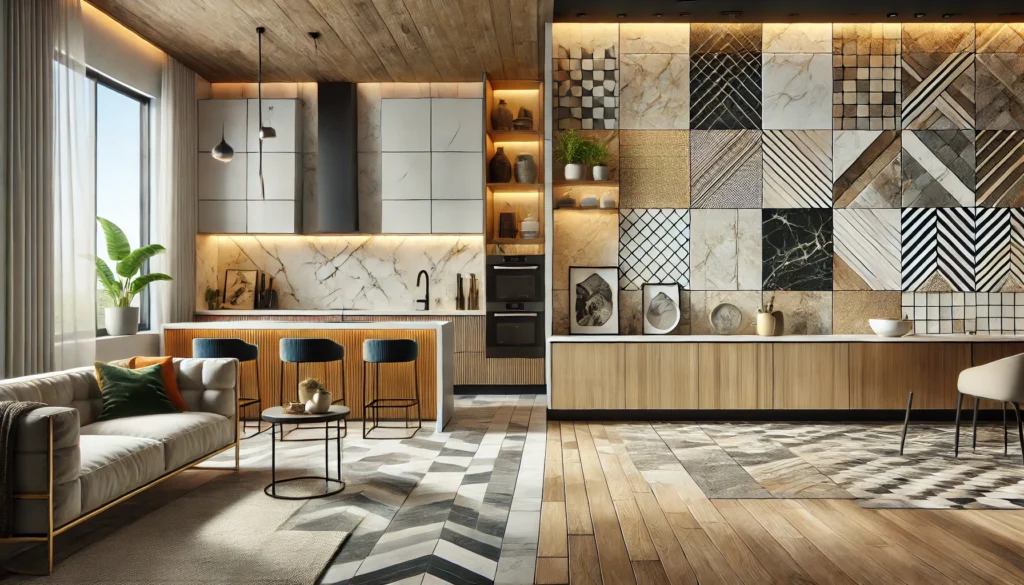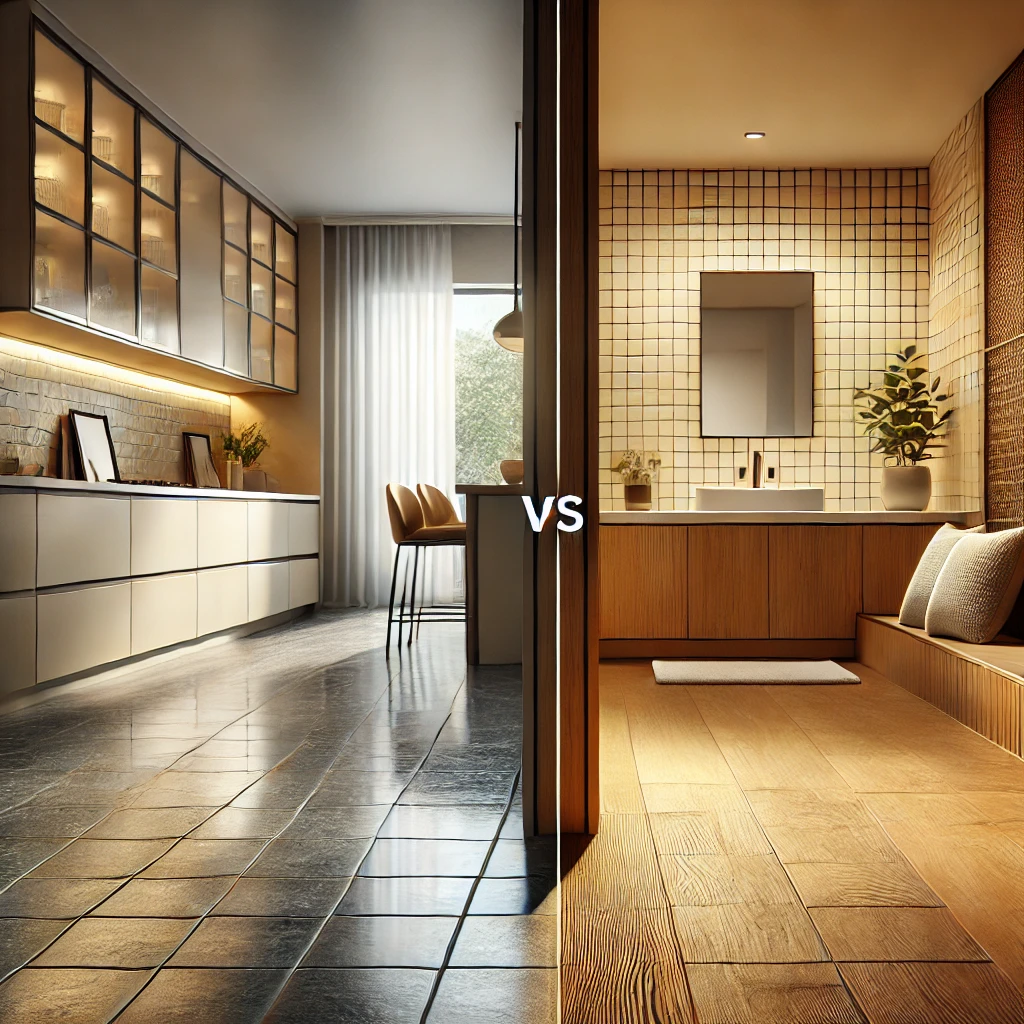You walk into a home where every step echoes with the spirit of the desert—vibrant Navajo patterns dancing across the walls, warm terra cotta tiles grounding the space like the sun-baked earth outside. It’s not just decor; it’s a vibe, a connection to a rugged, beautiful landscape that’s been inspiring homeowners for centuries. But how do you bring that Southwestern magic into your own desert home without tripping over design pitfalls or maintenance headaches? And why do these tiles feel so right for spaces kissed by arid winds and endless skies?
we’re diving into the world of Southwestern tiles—those bold Navajo designs and earthy terra cotta beauties that make desert homes sing. We’ll unpack their allure, tackle the challenges they pose, and hand you the tools to make them work in your space. From practical tips to real-life inspiration, advanced design hacks to answers for your burning questions, this guide is your roadmap to a home that’s as stylish as it is soulful. Ready to transform your desert digs? Let’s roll.
Introduction: Why Southwestern Tiles Are a Desert Home’s Best Friend
What Are Southwestern Tiles, Anyway?
Southwestern tiles are like the lovechild of Native American artistry and Spanish colonial flair. Think hand-crafted clay, sun-warmed terra cotta, and patterns that tell stories—especially those iconic Navajo designs with their geometric zigs and zags. These aren’t your run-of-the-mill tiles; they’re a slice of history, a tribute to the Southwest’s cultural tapestry, and a practical choice for homes that need to stand up to desert life.
Imagine them as the rugged boots of home decor—tough, timeless, and packed with personality. Whether they’re lining your floors, jazzing up a backsplash, or framing an outdoor patio, Southwestern tiles bring a warmth and character that mass-produced alternatives just can’t touch. And in a desert home? They’re practically family, blending seamlessly with the sandy hues and stark beauty outside your door.
The Magic of Navajo Patterns and Terra Cotta
So, what’s the big deal with Navajo patterns and terra cotta? Navajo designs are the rockstars of this duo—bold, rhythmic, and full of energy. Their diamonds, crosses, and stripes pop with colors like red, turquoise, and black, turning any surface into a statement. Terra cotta, meanwhile, is the quiet hero—its earthy reds and oranges wrap your space in a cozy hug, like a campfire on a chilly desert night.
Together, they’re a match made in heaven for desert homes. A 2023 survey from the American Institute of Architects revealed that 68% of Southwestern homeowners lean toward natural materials like terra cotta for their heat-regulating powers and aesthetic harmony with the landscape. It’s not just about looking good—it’s about feeling right, inside and out.

The Problem: What’s Holding You Back from Southwestern Tile Bliss?
Common Design Dilemmas
Let’s get real—Southwestern tiles can be intimidating. Those Navajo patterns? They’re loud. That terra cotta? It’s intense. If you’re not careful, your living room might feel more like a souvenir shop than a stylish retreat. Ever wondered why some homes pull off this look effortlessly while others… don’t?
One big hurdle is blending them with what you’ve already got. Maybe your desert home is rocking a modern vibe with clean lines and neutral tones—how do you toss in a Navajo-patterned floor without it screaming for attention? Or perhaps you’re worried about committing to something so distinct. What if you fall out of love with it down the road? These are the design dilemmas keeping you up at night.
Maintenance Worries in the Desert
Then there’s the practical side. Desert life is tough—blazing summers, frosty winters, and dust that seems to sneak into every crevice. Can Southwestern tiles handle the heat (literally)? Terra cotta’s porous nature means it can soak up spills like a sponge if you skip the sealing step. And those intricate Navajo designs—will they fade under the sun’s relentless gaze?
A 2022 Tile Council of North America report found that 55% of homeowners hesitate over natural tile upkeep, fearing cracks or stains. It’s a valid concern, but not a dealbreaker. The question is: How do you make these tiles work without turning maintenance into a full-time job?
Solutions: Your Guide to Southwestern Tile Success
How to Choose the Right Southwestern Tiles
Picking the perfect tiles doesn’t have to feel like a high-stakes gamble. Here’s how to get it right:
- Patterns and Colors: Navajo patterns range from wild and colorful to subtle and muted. Got a small space? Stick with simpler designs or earthy tones to keep things calm. Big, open room? Go bold—let those reds and blues strut their stuff. It’s all about balance.
- Material Choices: Terra cotta is the classic, with its rustic charm and natural cooling properties—perfect for desert homes. But don’t sleep on saltillo tiles for extra texture or glazed ceramic for a low-maintenance twist. Each has its own personality, so choose one that vibes with your lifestyle.
Tile-Shopping Checklist:
- Measure your space (don’t eyeball it!).
- Check how light hits the room—colors shift under desert sun.
- Factor in foot traffic—kitchens need tougher tiles than patios.
- Test samples at home before you buy.
Quick Hack: Order a few tile samples online or hit up a local showroom. Lay them out, live with them for a day, and see what clicks. It’s like a first date—chemistry matters.
Installation Tips for Desert Homes
Installing Southwestern tiles in a desert climate takes a little know-how. Here’s your game plan:
- Prep Like a Pro: Your surface needs to be spotless, dry, and flat. Desert temp swings can wreak havoc, so use a flexible adhesive to keep tiles from cracking when the weather flips.
- Seal the Deal: Terra cotta demands a good sealant—think of it as sunscreen for your tiles. A penetrating sealer locks out moisture and stains. For grout, pick a shade that plays nice with your tiles—dark hides dirt, light keeps it fresh.
- Local Expertise: Hire an installer who gets desert quirks. They’ll know how to handle the heat and dryness so your tiles stay put for years.
Case Study: A Tucson family installed unsealed terra cotta in their kitchen and regretted it when wine stains set in. After a pro resealed it, they’ve had zero issues—and a gorgeous floor to boot.
Examples: Southwestern Tiles Stealing the Show
Real-Life Applications
Let’s see these tiles in action—because inspiration beats theory every time:
- Kitchen Backsplashes: A Navajo-patterned backsplash can turn a blah kitchen into a showstopper. Pair it with white cabinets and a wooden island for a look that’s fresh yet grounded. One Scottsdale homeowner swapped out bland subway tiles for a turquoise-and-red Navajo design—suddenly, cooking felt like an event.
- Bathroom Floors: Terra cotta in the bathroom is pure desert spa vibes. Add a few cacti and a woven towel, and you’ve got a retreat. A 2022 Reno project saw a couple ditch cold porcelain for terra cotta—their guests can’t stop raving about the warmth underfoot.
- Outdoor Patios: Southwestern tiles were born for patios. They shrug off sun and wind while turning your outdoor space into an extension of the desert. Picture this: a Phoenix patio with terra cotta tiles and a Navajo accent border, now the go-to spot for family barbecues.
Data Point: Homes with unique tile features like these see a 12% bump in buyer interest, per a 2023 Zillow analysis. Beauty pays off.
Advanced Tips: Elevating Your Southwestern Tile Game
Mixing Southwestern Tiles with Modern Design
Think Southwestern tiles are too old-school for your sleek desert pad? Think again. Here’s how to make them play nice with modern flair:
- Accent Magic: Use Navajo patterns sparingly—like a single strip in a shower or a framed wall piece. It’s the design equivalent of a bold lipstick—just enough to turn heads.
- Minimalist Mashup: Pair terra cotta with smooth concrete counters or minimalist furniture. The contrast feels intentional, not chaotic. A 2023 Houzz trend report noted 62% of homeowners are blending traditional and modern—Southwestern tiles are your secret weapon here.
- Color Play: Stick to a neutral base (think grays or whites) and let your tiles be the star. A Santa Fe designer used terra cotta as a fireplace surround against a white wall—simple, stunning, and totally now.
Pro Insight: “Tiles are like spices,” says interior designer Mia Torres. “A little goes a long way if you mix them right.”
Conclusion: Your Desert Home Deserves Southwestern Tiles
Southwestern tiles—bold Navajo patterns, earthy terra cotta—are more than a design choice. They’re a celebration of desert life, a way to bring warmth and story into your home. We’ve walked through the challenges (design clashes, upkeep fears), handed you solutions (smart selection, solid installation), and showcased how they shine in real spaces. Now, it’s your move.
Why wait? Whether it’s a splash of Navajo in your kitchen or a terra cotta patio that begs for barefoot evenings, these tiles are ready to transform your desert home. Start small or go all in—either way, you’re crafting a space that’s uniquely you.
Call to Action: Ready to dive into the world of Southwestern tiles? Browse our handpicked collection or chat with a design pro to find your perfect match. Your desert dream home is just a tile away.
FAQs: Your Southwestern Tile Questions, Answered
- Are Southwestern tiles tough enough for busy homes?
You bet. Terra cotta and ceramic can handle the chaos—just seal them well and watch them thrive. - How do I use Navajo patterns in a tiny room without it feeling cramped?
Go small-scale with the patterns or use them as an accent—like a rug or a single wall strip. Less is more here. - What’s the upkeep like for terra cotta tiles?
Simple: Sweep weekly, mop with a gentle cleaner, and reseal every couple of years. It’s low-fuss for big impact. - Can Southwestern tiles fit a modern aesthetic?
Absolutely. Pair them with clean lines and neutral tones—they’ll add soul without stealing the show.
Where can I score Southwestern tiles on a budget?
Check out ceramic lookalikes, hit up clearance sales, or shop local artisans for deals. Quality doesn’t have to break the bank.



